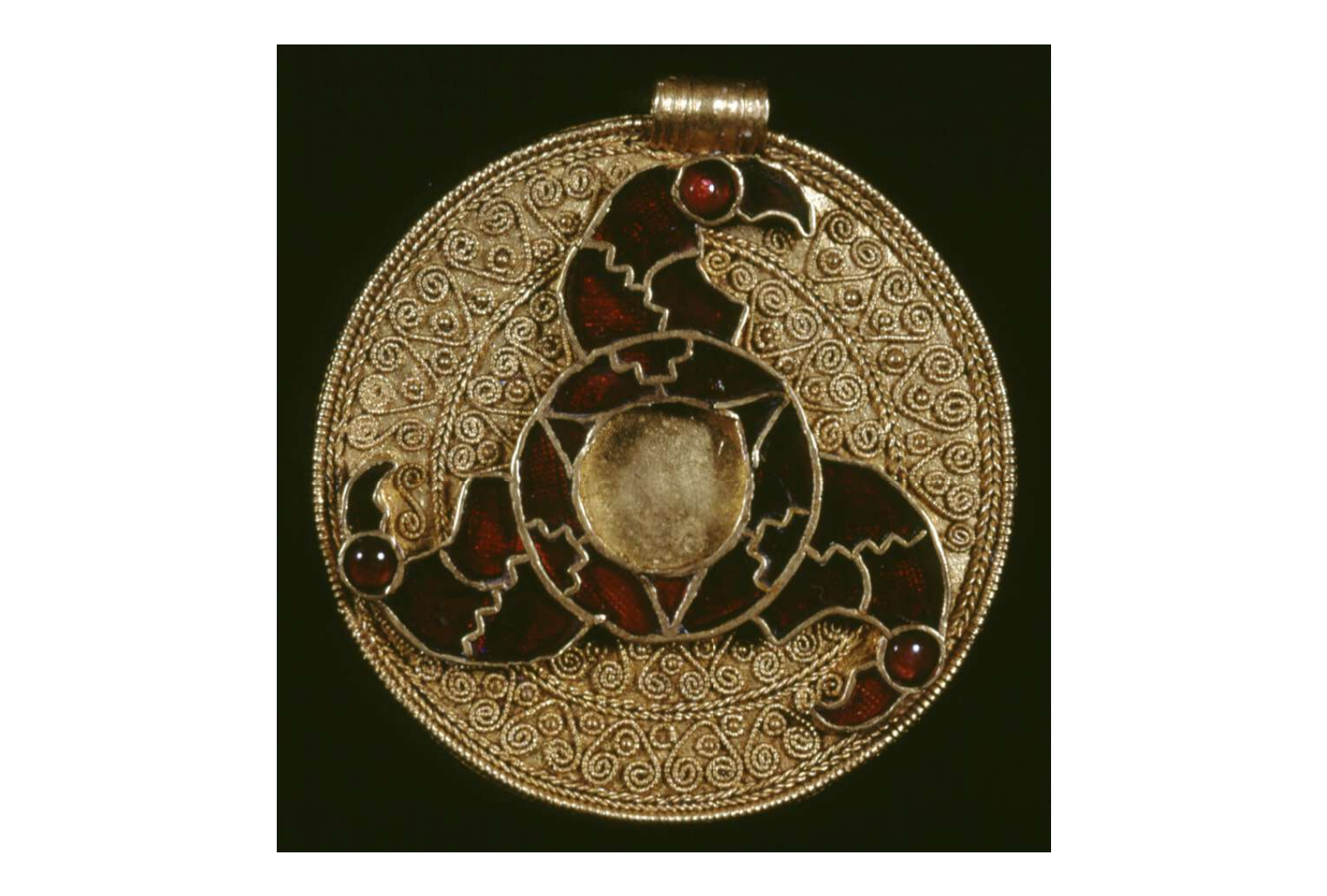Three Legs Good, Five Legs Bad?
The Triskele: Ancient Symbol of Energy and Enlightenment
The triskele — also known as the triskelion — is an ancient symbol consisting of three conjoined, outward-directed spirals. While the symbol is often associated with Celtic culture, it actually has roots that stretch back to Neolithic times. The term “triskele” comes from the Greek word for “three legs,” and it represents a dynamic symbol of constant motion and action. In this sense, it is associated with the rising and setting of the sun, which is constantly in motion.
The triskele’s exact symbolic significance can be elusive. Some interpret it as a representation of progress, while others believe it signifies the spiritual path to enlightenment. The ancients thought that energy, both physical and spiritual, flowed in a spiral form, and the triskele embodies this concept. For The House of Good Fortune, the triskele evokes the spirit of the song Keep On Movin’ by Soul II Soul, a song that has been described as a “clarion call to those in need of a little motivation in their lives.” Word.
Why three legs instead of two or four? The number three symbolizes spiritual synthesis. Geometrically, it is expressed by the three points of a triangle, representing the concept of sufficiency. This idea of completeness and balance is central to the triskele’s meaning.
Contemporary ceramic triskelion; House of Good Fortune Collection
Triskele (in situ) along the Camino de Santiago in Galicia, Spain.
The Triskelion and Trinacria
A version of the triskele is associated with the Isle of Man, which is located in the Irish Sea. In this iteration, the spirals have been replaced by bent, armored legs with boots and spurs that appear to be running in a circle. According to the Manx National Heritage Museum, “The origins of the ancient Three Legs of Mann are unknown. A common theory suggests it was adopted in the Thirteenth Century as the royal coat of arms.” (There are entire books on this topic for those who want to do a deep dive.)
Another version of the triskele is associated with Sicily, an island that is roughly triangular in shape. In this iteration, called the trinacria (“three-pointed”), the legs emanate from the winged head of the Gorgon Medusa. Regular followers of The House of Good Fortune are familiar with the long history of the Gorgoneion as an apotropaic device. Three stalks of wheat (which are sometimes described as “corn” as an umbrella term for any type of grain) symbolize the fertility and prosperity of this region.
As a brief aside, the tailless Manx cat (from the Isle of Man) is also a symbol of the island. According to Manx folklore, marauding Vikings believed that the cats’ tails were good luck charms, so mother cats would bite off their kittens’ tails to keep them safe. Another myth posits that the Manx cat lost its tale because it was the last to board Noah’s Ark and the door slammed shut on its tail. (The tailless appearance is actually the result of a genetic mutation.)
(above) Trinacria on silver coin, Roman Republic 49 BC © The Trustees of the British Museum
(right) Isle of Man pin badge, “Lucky Manx Cat: No Tail But Lots of Luck” with triskelion emblem
The triskele has been a popular jewelry motif for hundreds of years, and many wear the triskele as a personal talisman today.
(above) Disc pendant, early 7th century, Anglo Saxon. Three cloisonné birds' heads with cabochon garnet eyes, arranged in the form of a triskele, radiate from a central garnet ring, which encloses a circular setting, now empty.© The Trustees of the British Museum
(right) Necklace made with Horse Brass featuring the Three Legs of Mann, House of Good Fortune Collection.
The triskele’s enduring appeal lies in its ability to be imbued with layers of deeply personal and even idiosyncratic meaning. Whether it represents progress, spiritual enlightenment, or regional identity, the triskele remains a powerful symbol of energy and motion, constantly inspiring those who encounter it.
Three Legs Good, Five Legs Bad?
A note to readers: the three-legged triskele/ triskelion/ trinacria should not be confused with the five-legged demon Buer, who is described as a Great President of Hell, having fifty legions of demons under his command. He is typically depicted as having the head of a lion and five goat legs. Geometrically, the five points represent the pentagram, or five-pointed star, which in turn represents wholeness or perfection.












